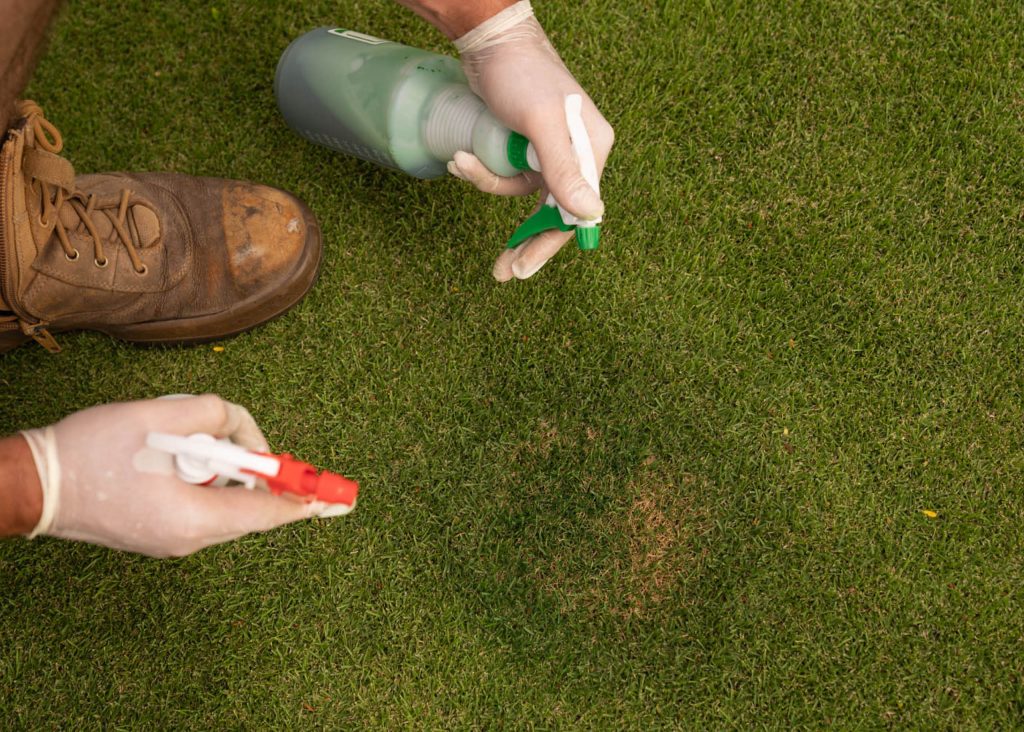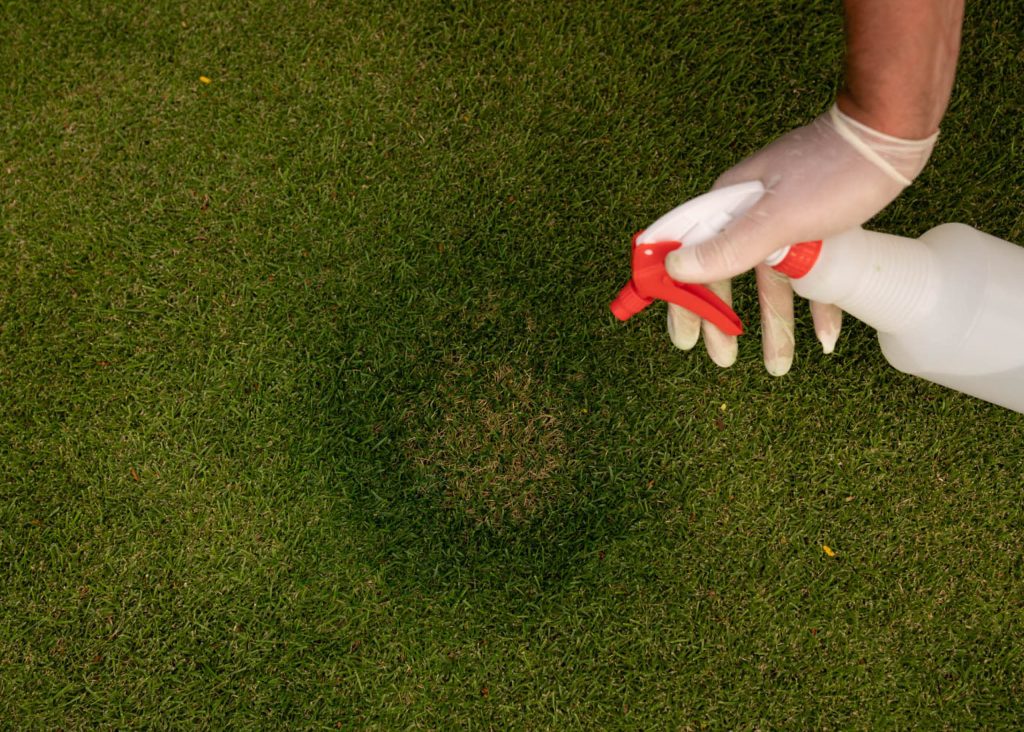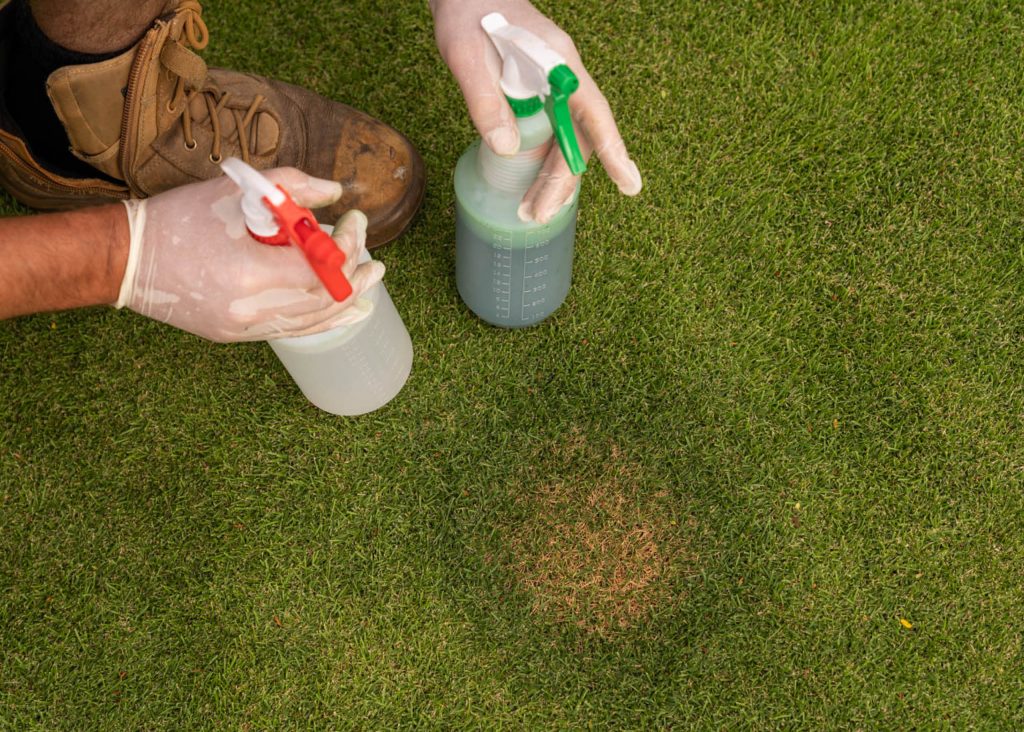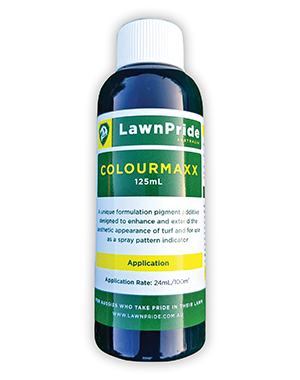When it’s too Hot to Mow Your Lawn!
A healthy lawn provides you and your family with a green, lush and welcoming environment. However, when temperatures rise and the harsh summer sun beats down on your lawn, the ...

 We’ve all seen them: lawns that usually lose their colour in winter or summer suddenly become an abnormally bright green once the ‘For Sale’ sign is hammered into place.
We’ve all seen them: lawns that usually lose their colour in winter or summer suddenly become an abnormally bright green once the ‘For Sale’ sign is hammered into place.
The practice of painting lawns originated on Hollywood film sets during the 1950s and was adopted by the managers of golf courses in the southern United States.
They used it as a temporary fix on dormant warm-season grasses because it was cheaper than overseeding with cool-season grasses in autumn to ensure surfaces stayed green during winter.
Lawn painting is now commonplace in sports fields across Australia and is becoming increasingly popular with landscapers and in the real estate sector for improving the roadside appeal of properties.
It’s so easy to do that some homeowners are even touching up yellow and brown spots or colouring entire lawns for special events.
Good quality lawn paint is made from biodegradable ingredients that, once dry, are environmentally safe and harmless for humans and pets.
It’s different to the standard spray paint you can buy from the hardware store. Many products are made with pulverised particles of kaolin, a clay mineral, or plant-based pigments.
Depending on how quickly your lawn grows and how often you mow it, the paint can last for up to 12 weeks.
 In a matter of hours, lawn paint can be used to instantly green up frost-affected lawns in winter or drought-stricken summer lawns.
In a matter of hours, lawn paint can be used to instantly green up frost-affected lawns in winter or drought-stricken summer lawns.
The other good news is that it won’t wash off with rain, doesn’t run on dewy mornings and won’t rub off on clothing.
Research has found 93 per cent of real estate agents recommend vendors improve their lawn before going to market, because vendors “never get a second chance to make a good first impression”.
The survey found a nicely presented lawn could add 20-30 per cent or more to the value of a home. Based on the 2022 national median house price of $740,000, that equates to an extra $148,000 or more, which is not to be sneezed at.
The appearance and longevity of lawn paint varies according to dilution and application rate, as well as air temperature, humidity and turfgrass species.
Products containing plant pigments are absorbed into the leaf, rather than coating the blade, and have no impact on plant processes.
Some products also contain fertiliser to give the grass a pick-me-up from the inside as well.
 You’re hosting a milestone birthday party or Christmas gathering in the back yard, but the lawn is not looking its best.
You’re hosting a milestone birthday party or Christmas gathering in the back yard, but the lawn is not looking its best.
If time is on your side, we recommend following our tips for keeping your grass green year round here.
But if you don’t have the time or money to bring it up to scratch, lawn paint is an option as long as the grass is thick and dormant, but not dead. A dead lawn will need to be replaced.
If you’re not sure how to go about it, you could hire a professional. Try searching online for “professional lawn painting” or “lawn care services”.
But if you’d rather take the DIY route, there’s numerous demonstration videos on YouTube.
Like any other project, preparation is important.

LawnPride ColourMaxx 125mL has a unique formulation pigment that augments and prolongs the aesthetic appearance of your lawn. The recommended application rate of LawnPride ColourMaxx 125mL is 24mL/100sqm and it can be applied to Zoysia, Kikuyu, Couch and Buffalo grasses.
SHOP NOWIf you have a special requirement (such as a selling your property, party or wedding) to have a green lawn then lawn paint can be the answer in the cooler months when your lawn is not looking its best.
However remember, painting your lawn can be a quick fix, but it’s only a short-term solution and won’t repair underlying problems caused by poor drainage, disease or having the wrong variety in the wrong place.
Browse the myhomeTURF website for solutions to a range of lawn ailments, and bookmark our Ultimate Turf Maintenance and Lawn Care Guide for future reference.
You can also find a range of lawn care products from leading brands in the myhomeTURF online store.